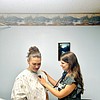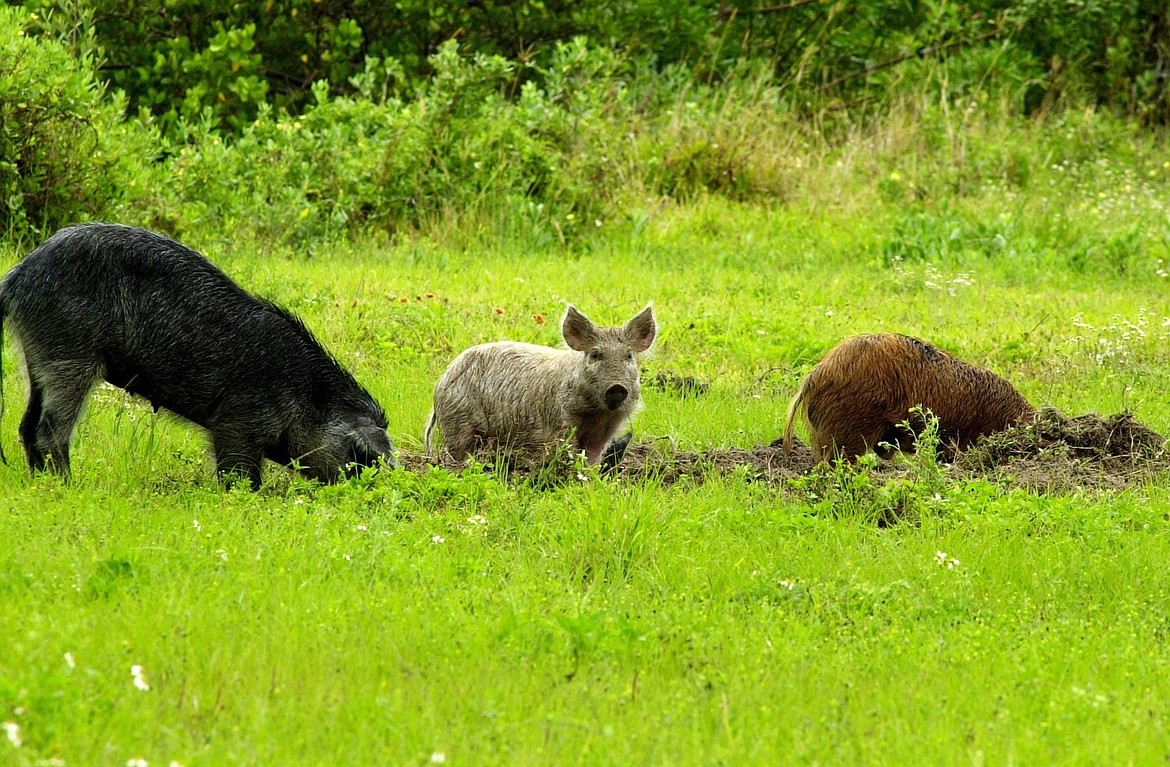State, federal officials sound alarm on feral pigs
HAYDEN BLACKFORD | Hagadone News Network | UPDATED 3 years, 3 months AGO
The carcass of a dead pig found west of Lake Koocanusca prompted the Montana Department of Livestock (DOL) to hold meetings in both Libby and Eureka last week, as the report reignited concerns that feral swine may eventually enter Montana from Canada.
The DOL stated in a press release that the pig’s status has not been confirmed feral, although it has features often associated with feral pigs—including tusks and long hair.
The United States Department of Agriculture is currently testing samples taken from the carcass. In a public meeting held in Libby on Sept. 22, Tahnee Szymanski, assistant state veterinarian with the Department of Livestock, said the report concerned a “pretty degraded carcass.”
Although it is obviously some type of pig, test results may not be conclusive as to whether or not it was a feral swine that was found on the Kootenai National Forest.
It is important to note that feral swine, which exist across southern Canada, have never been confirmed in Montana, Szymanski said. Still, feral swine are invasive in many central and southern U.S states.
Originally, the European boar was brought to Canada in 1980. Soon after domestic boars were released, and some were able to survive in the wild despite the harsh northern climate. The pig’s ability to reproduce has earned them a reputation as one of the world’s most invasive species, according to Craig Glazier of the U.S. Department of Agriculture’s Wildlife Services.
Glazier noted that the goal of states with emerging pig populations is to eliminate them, something that recreational hunting has never been able to accomplish. Instead of hunting, baited corral traps are the preferred method of elimination for invasive populations.
“You can’t barbecue your way out of this,” Glazier said.
Szymanski said Colorado tried hunting as a way of controlling or eliminating feral pigs, but it wasn’t effective.
The pig carcass in question was reported to the DOL in August, a recent press release stated. The DOL’s local investigation revealed no known owner, and the closest known domestic pigs were located 12 miles from the carcass, Szymanski said.
While there are some genetic differences between northern and southern swine populations the fear is the same—that once feral swine populations are established their population will increase rapidly. According to Szymanski a single pregnant sow is enough to establish a viable population.
Where the species spreads a hunting culture also follows, Szymanski said. However, despite the perceived benefit that large numbers of feral swine may bring for hunters, the actual impact feral swine would have on the environment is devastating, Szymanski said.
Feral swine can destroy important habitats and their wallows can be disruptive to wetlands or aquatic vegetation.
Feral swine are omnivores, meaning they’ll eat plants and animals. They also prey on the nests, eggs and young of native ground nesting birds, such as grouse. They’ll also eat deer fawns and actively hunt small mammals and reptiles.
Feral swine can also harm crops, spread invasive species and diseases.
The DOL investigates reports of feral swine and members of the public are welcome to aid the agency in detection efforts by reporting feral pig sightings. The Wild Spotter app allows hunters, hikers or other citizens to map invasive species. People using trail cameras are encouraged to report sightings as well.
Reporting sightings is recommended, as hunting or trapping feral swine is prohibited in the state of Montana. Hunting feral swine can teach the animals hunting behaviors or disperse the animals further, according to Szymanski.
Additionally, though there has been a documented instance where feral swine were transported to Montana by a would-be hunter, many feral swine reports are for owned domestic animals.
For those who think they have spotted a feral swine they are asked to call the Squeal on Pigs hotline at 406-444-2976, or visit the website SQUEALonPIGSMT.com.
ARTICLES BY HAYDEN BLACKFORD

Flower Lake Road paving enhances access to recreation
Thanks to the perseverance of the Libby Outdoor Recreation Association, a section of Flower Lake Road is now paved.
The brouhaha over BORZ designations in Lincoln Co.
What are BORZ and what do these designations mean?

Young professional spends summer aiding Libby Clinic
The disparity between urban and rural healthcare is something that organizations are trying to bridge with exposure.

